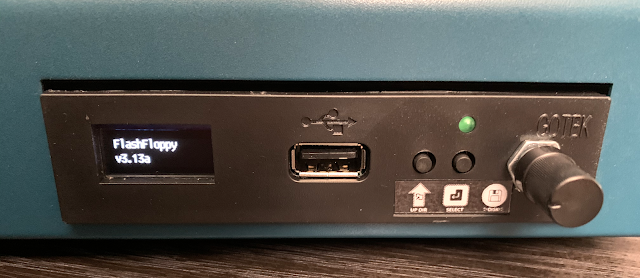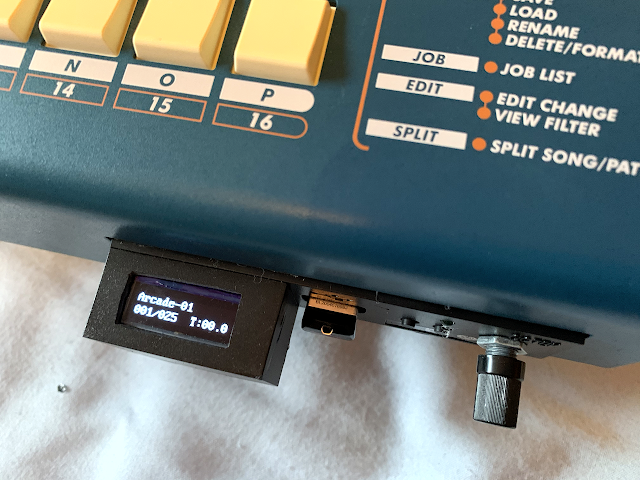One of my background tasks for the past few months has been researching mid-to-high-end 'grooveboxes'. Whilst the marketplace has lots of low cost (sub $500~) examples of 'single portable boxes that can create music using MIDI and samples' (aka grooveboxes, although there are much more sophisticated and complex definitions), from Teenage Engineering's Pocket Operators, OP-1/Z, the Roland MC-101, Novation's (hard to beat) Circuit, Korg's Electribe 2, Elektron's Digitone/Digitakt and Model:Cycles, Polyend's Tracker, the 1010 Music Blackbox, plus many more, the next level up is significantly more sparsely populated and much more diverse in approaches. Doubling the budget ($500-$1000 and more) can get you a much more capable device, but I wanted to know which one was best suited to my way of thinking?
(The title of this post kind of gives away the end result, of course!)
Many years ago, I remember being greeted with a certain amount of disbelief when I expressed my opinion that the major deciding factor in choosing a DAW should be the workflow and its alignment with your own internal mental model of how to make music. It seemed that brand-name, who else used it, resolution, number of tracks, latency, bundled plug-ins and many other factors were far more important to many people. My opinion hasn't changed, although I have found that I have increasingly moved to the 'boutique' end of the market: small, independent manufacturers who tend to be musicians and technologists. As an example, my most sophisticated pedal is a Poly:Digit, which isn't exactly mainstream...
The other vitally important word in that brief definition is 'single'. When I go away from a DAW with access to external hardware synths and effects, into the 'live performance' scenario, then I'm looking for ideally one box, and probably three boxes maximum. I've played the game of having lots of equipment to set up and tear down, and like most people who have done that more than a few times, I have decided that:
Simplicity Means Less To Go Wrong!
But back to those 'next level up' grooveboxes. So what are the main contenders? I whittled the list down to these:
- Elektron Octatrack (mk1 or mk2 (mk2 is a makeover that is probably more like a 1+))
- Roland MC-707
- ModDuo X
- Synthstrom Audible Deluge
- Akai Force
- plus a few others that were fighting for attention (MPCs!), and I even considered a few no-longer-current devices - even though trying to find second hand gear can be stressful...
As always, your favourite is probably missing from this shortlist. Note that I deliberately rejected these whole categories:
- hardware 'sequencer-only' devices (no Squarp Pyramid or Polyend Seq or Social Entropy Engine...)
- hardware controllers that require a DAW or computer (NI Maschine, Ableton Push...)
- modular 'sequencers plus a few modules'. (Creeping module purchases means your rig is never quite finished...)
My opinions
After months of careful research, here's my personal opinions:
- Elektron Octatrack.
The Octatrack has been bubbling under on my GAS list for a long time. And that's probably the main issue - it has been around for so long that it may be about to be replaced, and I hate buying something which is immediately replaced by something much better for less money!
Pros. Flexible sample playback, a song-mode sequencer (the Digitone and Digitakt lose points because of their lack of song support), and some neat processing. The eight channle scan also be used as a mixer, which is interesting. Looping support is also good. The Mark II's slider control is definitely a good reason to go for this in preference to the Mark I.
Cons. Seems to be difficult to learn. This might be the classic 'I will say it is hard to use because that makes me look good!' situation, but the YouTube video's of people using Octatracks seem to reinforce the amount of learning that is required. Is complexity what I want in a live environment? Probably not. Also, most people seem to use other gear with an Octatrack, so that's a concern. Finally, there's the nagging doubt that there's probably a Mark III in the pipeline, or maybe even a total revision.
- Roland MC-707
My first album was recorded using a TB-303, a TR-606 a Sequential Pro-One and a Casio CT-1000, and I've currently got a heavily modded TR-505, so I'm no stranger to Roland gear. The MC-707 is kind of what I reckon an Elektron Octatrack 3 might be like, although with a different workflow...
Pros. Ableton Live-style grid is a plus. Lots of immediately editable sounds without any need for a computer (probably the top feature request for the Novation Circuit 2).
Cons. No song-mode is a major disadvantage. At the sub-$500 price-point then this is acceptable, but I've spent too long with old school drum machines to want me to be constantly controlling what is happening. No way to send MIDI CCs might also be a problem if I was going to use it with anything else... No 'Scale' mode for the buttons is weird when most of the sub-$500 group have this! Having to effectively sacrifice a track to sequence external MIDI is strange, but again, for a single box then this is not as important as it might be if I was using this as the centre-piece of a studio.
- ModDuo X
I've been trying to buy one of these for over a year now, and it seems to be permanently out of stock, with pre-orders all being consumed in a few seconds of the site accepting them. So I've more or less given up on this one. I talked to Mod at one of the Ableton Loop events, and they seemed very confident, maybe not in a good way. Given their apparent supply chain problems, maybe my gut feeling was correct...
- Synthstrom Audible Deluge
Definitely a 'boutique' device, this goes against the grain in all the right ways. No display - well, not a display in the conventional sense, although if you scaled up a Novation Circuit, it could well look a lot like this. An interesting design, with unusual/novel controls that make a lot of sense.
Pros. Small, light, song-mode (plus arranger functions), Subtractive and FM synths, sample replay, and looping. Comprehensive features and a very good firmware update policy (frequent!). Seems to think the same way that I do!
Cons. Using the display as the main control means that you can spend a lot of time jumping in and out of song mode. As with the Octatrack, there seem to be a lot of shortcuts that require muscle-memory to learn.
- Akai Force
I immediately thought of a 'DAW in a box' when I first saw this, and this is too much like a Push and Ableton Live. I would struggle to say that I was 'DAWless' if I used one of these.
The result?
I went for a Synthstrom Audible Deluge (a 'Deluge' from this point onwards). It offered the features I wanted, the size and weight and convenience, and a pretty good 'single box' solution. When it arrived, the adapter envelope had a note on it:
So I took the 'Martin :)' and turned it into a label for the top panel:
So if you ever see a 'Martin :)' where you were expecting a Deluge, then that will be me!
---
I will report on my progress with the Deluge as I get familiar with it... So far, I'm definitely enjoying it!
---
If you find my writing helpful, informative or entertaining, then please consider visiting this link:
 Synthesizerwriter's Store (New 'Modular thinking' designs now available!)
Synthesizerwriter's Store (New 'Modular thinking' designs now available!)
 Synthesizerwriter's Store (New 'Modular thinking' designs now available!)
Synthesizerwriter's Store (New 'Modular thinking' designs now available!)






















